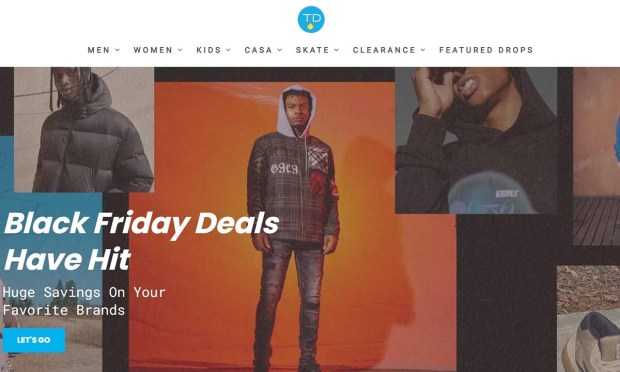How Product Drops, Marketplaces and Payments Keep Gen Z Loyal, D2C Brands Profitable

For decades, fashion followed a wholesale model, with brands serving as the creative houses and the retailers holding most of the power in the customer relationship, marketing and selling products and collecting data on consumer preferences.
As customer loyalty to individual brands plummets, though, companies’ focus has shifted to trying to be “the next Supreme,” said Matt Falcinelli, CEO of TheDrop.com, a marketplace platform that aggregates and curates streetwear for millennials and Generation Z.
“The consumer is a multibrand consumer, they’re shopping different brands, they want different brands, they want to match different brands,” Falcinelli said in an interview with PYMNTS’ Karen Webster. “But the brands want to be direct to consumer. They want to be mono brands, and the consumer is multibrand, and this is a huge issue in a $200 billion market.”
TheDrop, he said, can help bridge this divide, providing direct-to-consumer (D2C) margins for the brands while providing a “curated multibrand destination” for shoppers, with over 70 new items dropping each day. TheDrop features more than 300 brands, but less than 50% have Google Analytics implemented — and less than 30% use email marketing.
“What makes TheDrop so attractive to most brands is usually their [return on investment] is better on TheDrop than it is on marketing and driving sales on their own website because they’re learning how to manage that,” Falcinelli said.
For brands accustomed to wholesale seasonal models of dropping products four times per year, the shift to selling on TheDrop increases inventory risk as they have to sit on products for a bit longer, but Falcinelli noted that TheDrop puts marketing dollars behind the items that it lists. And by dropping new items every week or every two weeks, brands are naturally posting more things on social media and engaging with customers more often, driving increased sales to their websites in addition to TheDrop.
“It’s a double win for the brands, and we’ve had brands [where] it’s completely changed their businesses,” Falcinelli said.
PYMNTS research, conducted in collaboration with Scalefast, found that more than 21% of consumers have recently participated in product drops, including 42% of Generation Z and 32% of millennials. Nearly 47% of those who have previously participated in product drops are “very” or “extremely” interested in participating in similar sales events over the next year, as are over 22% who have not participated in product drops.
Read more: Product Drops, Flash Sales Winning Consumer Hearts, Minds, Brand Affinity
Falcinelli said he eventually imagines TheDrop’s homepage will look like a media site, featuring items and brand stories that update multiple times a day “in different markets and countries — and talking about global brands, not just U.S. brands.”
The Importance of Storytelling
Though TheDrop doesn’t do as much storytelling as Falcinelli would like, he told Webster that’s about to change as the company pushes more heavily into “new products that have a good story to tell.”
Not enough brands realize the importance of storytelling, Falcinelli said, even though it’s been known for decades that the deeper the emotional connection a customer has to an item, the better it will sell. Given that, TheDrop plans to use part of a recent Series A funding round to help create content and stories to promote brands, Falcinelli said.
“We know how critical it is not only to convert customers,” he said, “but also to build repeat and loyalty for our business.”
Related: Investors Drop $4.6M on Youth Fashion Platform TheDrop
He noted that he’s seen brands go from $2,000 a month in sales to $60,000 thanks to well-executed storytelling.
“It doesn’t matter who you are as a brand, as long as you’re executing that couple of good products, good lifestyle imagery to show how it looks and matches out in the street, and then you ship your orders out quickly,” he said. TheDrop also adds data to the mix, analyzing what’s selling well and identifying the best ways to adjust the storytelling and experience for each customer.
“I have over 6,000 T-shirts for men, and I have new T-shirts coming in almost by the hour,” Falcinelli said. “So, which ones do I show you, and which ones do I show Mike, and which ones do I look at? You want to tailor it.”
The Payment Angle
Not only is TheDrop a marketplace, Falcinelli said, but it also has “a really unique payment processing angle that few marketplaces have today.” A partnership agreement with payment-processing platform Qualpay allows it to mediate payments, and Falcinelli said he’s always talking about how to productize the relationship to TheDrop’s advantage.
TheDrop also offers a buy now, pay later (BNPL) option through Klarna, though this is something else that Falcinelli said he wants to possibly consider bringing in-house.
Most customers still pay using a credit card, Falcinelli told Webster, though the platform has seen Venmo become a bigger piece of the payment puzzle than PayPal and Apple Pay combined.
“Payments are evolving quickly as new methods come out, youth adopt new platforms,” he said.
